Abstract 9/2015
Table of content
Iwona Żygowska, Piotr Czech, Szczepan Gapiński, Adam Łosiński, Kinga Smolibowska, Agnieszka Templin – Analysis and evaluation of progress in the implementation of a road tunnel under the Martwa Wisła river in Gdańsk, Poland
Mieczysław Szczepański, Stanisław Pęski, Grzegorz Miros – Issues on designing subway on the example of Warsaw
Stanisław Albricht, Maciej Górnikiewicz – Subway in the Study of conditions and directions for the spatial development of the City of Cracow
Stanisław Albricht, Maciej Górnikiewicz – Preliminary analysis of possibilities to construct the 1st subway’s line in an east-west direction in Cracow
Wiesław Starowicz, Zofia Bryniarska – Analysis of changes in the number of public transport’s passengers in Cracow in the years 2004-2014
Abstracts
Iwona Żygowska, Piotr Czech, Szczepan Gapiński, Adam Łosiński, Kinga Smolibowska, Agnieszka Templin
Analysis and evaluation of progress in the implementation of a road tunnel under the Martwa Wisła river in Gdańsk, Poland
Abstract: Road tunnel under the Martwa Wisła river is the part of the Słowacki Route, providing convenient connection between the Gdansk Lech Walesa Airport and the Port of Gdansk. The tunnel together with the Marynarki Polskiej junction is an engineering object with the total length of 2,155 meters. Length of the tunnel section is 1,377.5 meters including the TBM tunnel length of 1,072.5 meters. The dimension of the two tunnel tubes is 12.5 meters each. The study “Analysis and evaluation of progress in the implementation of the road tunnel under the Martwa Wisła river in Gdańsk, Poland” proves the importance of the tunnel for the improvement of traffic condition in Gdańsk and in the development of the city. This article presents an economic analysis of the project as well as technical analysis concerning the choice of TBM method of the crossing the river. It also widely presents the geological and hydrogeological conditions, the methodology of surveys on these conditions. The article describes installation of the TBM, separation plant to clear slurry, principle of operations, boring advance of TBM, assessment of the cutter head and replacement of the damaged tools. Also fabrication of the tubing precast elements in the study as well as the process of building the cross-passages between the tubes of the tunnel are presented in the article. Finally the study provides the summary of the effects achieved during tunnelling under the Martwa Wisła river.
Keywords: road tunnel, tunnel under a river, TBM method
Mieczysław Szczepański, Stanisław Pęski, Grzegorz Miros
Issues on designing subway on the example of Warsaw
Abstract: Issues ondesigning the subway in Warsawhave been discussing since the Twenties of the 20th century as a result of quick development of the city connected to the growing problems of the public transport. This is why, 22nd September 1925 the Tram Company took resolution on the designing project of the underground train which – on basis of the experiences of other countries – was supposed to solve transport problems of the capital city. In the article – on the background of the calendar of development of the subway project, requirements for the preparation of the suggested route of the underground as well as the staging of the 1st and the 2nd subway line and construction and its methodology for both lines have been presented. Among discussed constructions there are stations, tunnels implemented with an opencast method as well as with a shield method and surface of railway tracks.
Keywords: subway, construction of the subway, tunnels, designing the subway
Stanisław Albricht, Maciej Górnikiewicz
Subway in the Study of conditions and directions for the spatial development of the City of Cracow
Abstract: Study of conditions and directions for the spatial development of the City of Cracow accepted by the Cracow City Council in July 2014 assumes dynamic development of the city as an European metropolis, center of modern economy and high technologies, science, culture, tourism, friendly towards its inhabitants, attractive to live and stay. The Study defines four significant: „Strategic projects of the City of Cracow”. It is assumed that only those project are able – in next 20 years – generate around 100 thousand workplaces and, simultaneously growth of 150 thousand inhabitants in Cracow and 50 thousand in the suburbs. One of the basic conditions necessary to fulfill accepted goals is development and sustainability of transport system aimed at – the most beneficial in the respect of the quality of environment and the vision of city development – modal split. It includes preference for the public transport and pedestrian’s and cyclist’s traffic as well as monitoring of the individual transport through implementation of the limited access to the restricted areas of the city, with the special respect to the city center.At the same time intensive activities have to be undertaken to rise attractiveness of public transport and pedestrian’s and cyclists’ traffic. Taking under consideration of the Cracow’s and other cities experiences as well as economy development together with growth of inhabitant’s mobility and necessary change in modal split, public transport’s needs may be increased even twice. Capacity of existing, radial-bypass model of tram network is nowadays – in the key nodes of the 1st and 2nd ring roads (bypass) – almost filled up. The situation will reach critical mass when construction of tram lines planned for next coming years is completed. With the presumed scenario of city’ and suburbs’ development it is necessary to launch a new transport mode, independent from construction and conditions of ground transport, providing effective transport service in the developed areas – the subway.
Keywords: passenger transport, public transport, subway, city development
Stanisław Albricht, Maciej Górnikiewicz
Preliminary analysis of possibilities to construct the 1st subway’s line in an east-west direction in Cracow
Abstract: The article is based on the paper: “Preliminary analysis of possibilities to construct the 1st subway’s line in an east-west direction in Cracow”. Route of 1st subway’s line is determined in an east-west direction, in the north part of the city, from Bronowice through the Old City to Nowa Huta. Along the 1st subway’s line there are around 280 thousand inhabitants, 180 thousand working people and 160 thousand students in the 8 biggest public universities. 4 shopping centres and 2 commodity exchanges with the area of 300 thousand square meters as well as 5 biggest sport facilities: “Wisła”, “Cracovia”, “Hutnik” and “Wawel” stadiums and sport – exhibition hall Krakow Arena, all together for 75 thousand spectators. There is also around 180 square meters of the office space in 5 office centres, 6 hospitals, 6 public administration buildings and the area of the highest accumulation of Cracow commercial and public services – the north part of the Old Town. In the corridor of the 1st subway’s line there are around 100 hectares which – according to the Study of conditions and directions for the spatial development of the City of Cracow – are to be devoted for the high intensity development. Preliminary analysis is prepared for 3 alternatives routes: A, B, C. Each route takes under consideration monuments conservator’s, geological and hydrogeological conditions as well studies on current motion generating potentials together with possibilities to locate new investments in the area of subway’s influence. Analysis and working discussions undertaken during preparatory works enable to define problem areas that need much more detailed working out (multi branch concept) than it is elaborated in the current Analysis. Aspects to be considered that have to be listed are: location (final route of the 1st line, locations of subway stations, development of the ground above the stations, locations of ventilator’s facilities) and construction technology (methods of construction stations and sections of railway tracks). This “Preliminary analysis of possibilities to construct the 1st subway’s line in an east-west direction in Cracow” leads to the general conclusion about necessity to prepare Multi Branch Concept of the 1st subway’s line which would answer different questions and issues that are not decided yet. The Concept should be elaborated prior or simultaneously with the Feasibility Study.
Keywords: passenger transport, public transport, subway, city development
Wiesław Starowicz, Zofia Bryniarska
Analysis of changes in the number of public transport’s passengers in Cracow in the years 2004-2014
Abstract: Knowledge of the number of urban public transport’s passengers is significant in the reference to the planning of proper adjustment supply to the demand. The article is to evaluate the change in the number of public transport ‘s passengers in Cracow from 2004 to 2014 in connection with preparatory works before decision on the implementation of the first line of subway. The number of conveyed passengers has been assessed with three methods: the GUS method; method of research on the structure of purchased tickets and method of calculating of the number of passengers travelling by public transport in selected days. The article has been completed with characteristics of travels on the basis of researches on real number of transported passengers in 2014 (inequality of transport Saturday-working day, Sunday-working day, inequality of travels in twenty four hours). The analysis results with the information that 351 million of passengers were transported in Cracow in 2014 which is 16% increase comparing to 2004 (method of research on the structure of purchased tickets) or 5% (method of real measurement). Those numbers show the need to search for more effective transport means. Finally, having received detailed results of the research on the number of subway’s passengers (getting on at all stations of the planned 1st subway’s line) the prospective number of subway’s passengers has been presented.
Keywords:

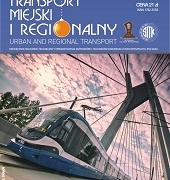 SITK RP
SITK RP 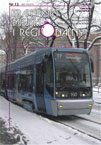 SITK RP
SITK RP 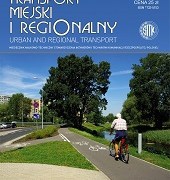
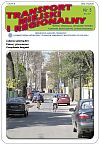 SITK RP
SITK RP 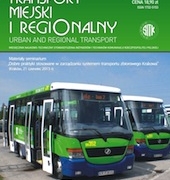 SITK RP
SITK RP 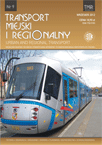 SITK RP
SITK RP 
 SITK RP
SITK RP SITK RP
SITK RP